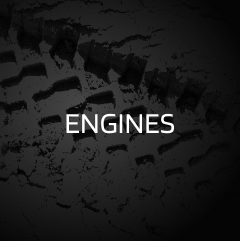 CCA Spares
CCA Spares
Connecting Rods: Bridging the Gap in Engine Dynamics
In our exploration of the intricate components of internal combustion engines, our focus now shifts to a component that plays a vital role in translating linear motion into rotational power: the connecting rod. Join us as we delve into the world of connecting rods, understanding their functions, design considerations, and their impact on engine performance.
Linking Pistons to Crankshaft:
Connecting rods serve as the crucial link between the reciprocating motion of pistons and the rotational motion of the crankshaft. Dive into the mechanics of this linkage, exploring how the connecting rod’s design facilitates the conversion of linear motion into rotational force, propelling the engine.
Materials and Strength:
Connecting rods operate in a demanding environment of high pressures and rapid movements. Explore the materials commonly used in connecting rod construction, such as steel, aluminum, or titanium. Understand the trade-offs involved in material selection, balancing factors like strength, weight, and durability.
Big End and Small End Design:
The connecting rod features two distinct ends: the big end, which connects to the crankshaft, and the small end, which connects to the piston. Examine the design considerations for each end, including the use of bearings and their role in reducing friction and wear. Understand how proper lubrication is essential for the smooth operation of the big end and small end.
Balancing and Engine Dynamics:
Balancing the rotating and reciprocating forces within an engine is critical for smooth operation. Learn how the design of connecting rods contributes to engine balance, minimizing vibrations and ensuring stability. Explore concepts like the balance factor and how it influences engine performance.
High-Performance Connecting Rods:
In the realm of high-performance engines, aftermarket connecting rods are often employed to handle increased power and higher RPMs. Explore the characteristics of performance connecting rods, including lightweight designs and specialized materials, and understand their role in supporting the demands of racing and high-performance applications.
Connecting Rod Design Variations:
Engines come in various configurations, and connecting rod designs vary accordingly. From the straightforward design of inline engines to the complexities of V-shaped and horizontally opposed configurations, understand how connecting rods adapt to different engine layouts.
Finite Element Analysis (FEA) and Optimization:
Advancements in engineering techniques, such as Finite Element Analysis (FEA), have allowed for the optimization of connecting rod designs. Explore how computer-aided simulations contribute to refining the structural integrity and performance of connecting rods, leading to more efficient and durable engine components.
Maintenance Considerations:
While connecting rods are robust components, proper maintenance is essential for their longevity. Learn about common issues that can affect connecting rods, such as bearing wear, and understand the importance of regular oil changes and proper engine lubrication.
In conclusion, connecting rods serve as the bridge between pistons and crankshaft, playing a pivotal role in the conversion of motion within the engine. This article has provided an in-depth exploration of their functions, materials, and design considerations. Stay tuned for the next installment as we continue our journey through the intricate components of internal combustion engines.

